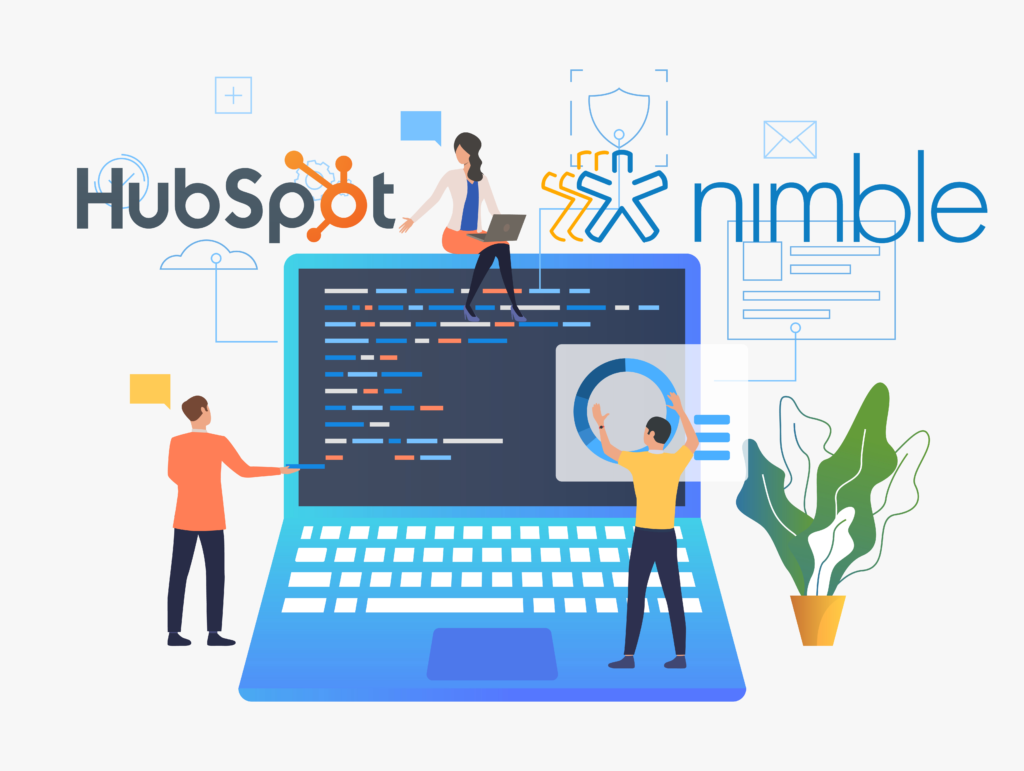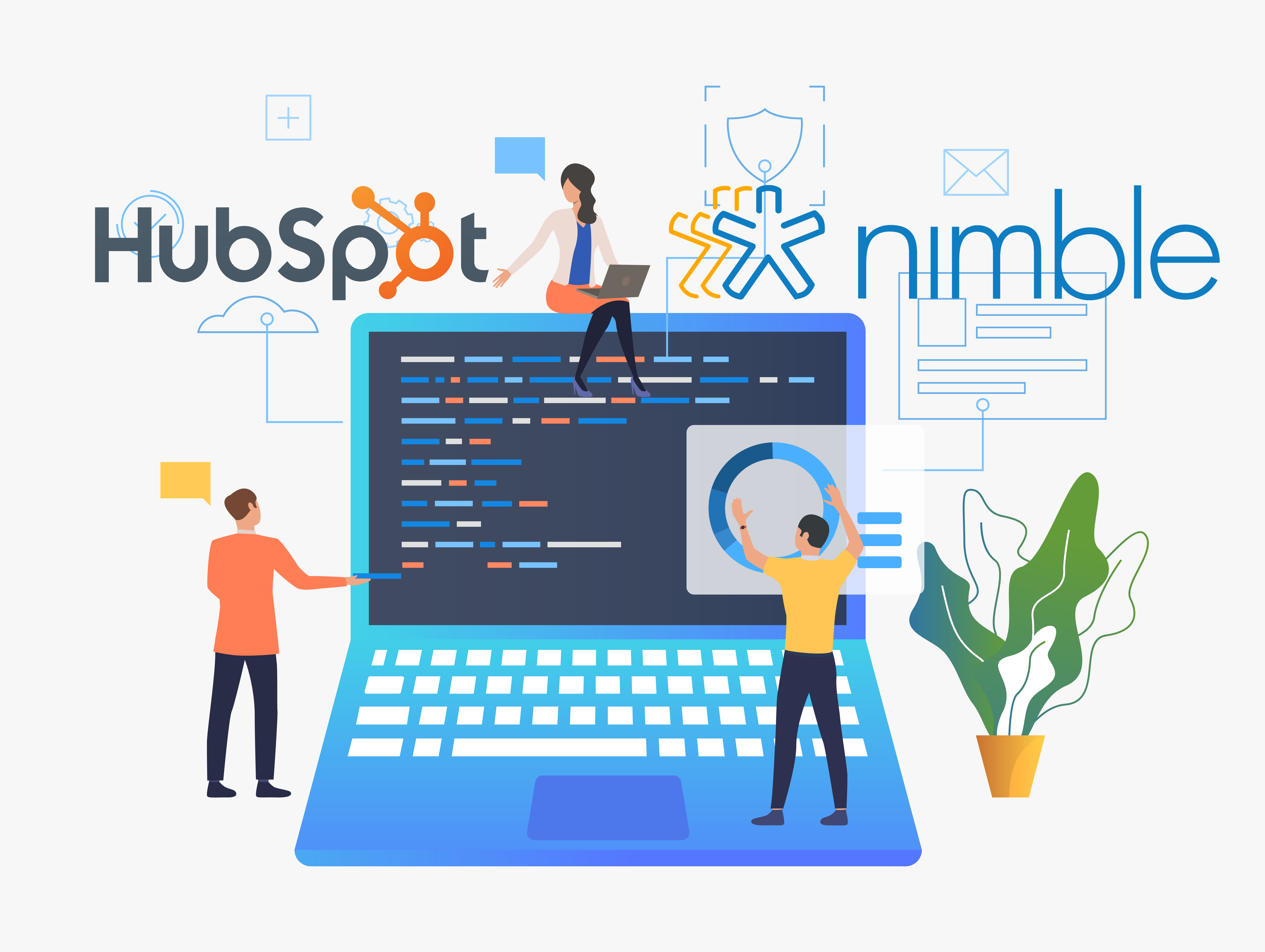As businesses continue to expand their online presence, there is a growing need for effective customer relationship management (CRM) software. Two popular options in this space are HubSpot and Nimble. Both tools offer a range of features and benefits to help businesses manage their customer relationships, but there are some key differences to consider. In this article, we will explore HubSpot vs Nimble and highlight some of the strengths and weaknesses of each platform.

Overview of HubSpot vs Nimble
HubSpot is a comprehensive CRM tool that offers a wide range of features, including marketing automation, sales management, and customer service. It is a cloud-based software that is designed to help businesses grow their traffic, convert leads, and close deals. HubSpot’s CRM also integrates with other HubSpot tools such as Sales Hub and Marketing Hub.
Nimble, on the other hand, is a simpler CRM tool that focuses on contact management and social media integration. It allows users to manage their contacts and track their interactions across various social media platforms. Nimble also offers features such as lead tracking, task management, and email integration.
While both platforms have their strengths, businesses should carefully consider their needs and goals when selecting a CRM tool.
Features and benefits of HubSpot
Marketing automation: HubSpot’s marketing automation feature allows users to create automated workflows that help them save time and improve efficiency. It includes email marketing, lead scoring, and social media management features.
Sales management: HubSpot’s Sales Hub provides users with a range of tools to manage their sales pipeline, track leads, and close deals. It includes features such as deal tracking, contact management, and email tracking.
Customer service: HubSpot’s Service Hub offers a range of tools to help businesses provide better customer support. It includes features such as ticketing, live chat, and knowledge base management.
Integrations: HubSpot integrates with a wide range of third-party tools, including Salesforce, Zoom, and Slack. This allows users to streamline their workflows and improve their productivity.
Pricing: HubSpot offers a range of pricing plans, including a free plan for basic CRM features. Paid plans start at $50 per month and include additional features such as marketing automation and sales management.
Features and benefits of Nimble
Contact management: Nimble’s contact management features allow users to manage their contacts and track their interactions across various social media platforms. It includes features such as contact import/export, tagging, and filtering.
Social media integration: Nimble integrates with various social media platforms, including Twitter, LinkedIn, and Facebook. This allows users to track their interactions with contacts on these platforms and engage with them more effectively.
Lead tracking: Nimble allows users to track leads and monitor their progress through the sales pipeline. It includes features such as lead scoring and pipeline management.
Task management: Nimble offers a range of task management features to help users stay organized and on track. This includes features such as task assignment, task reminders, and task prioritization.
Email integration: Nimble integrates with various email platforms, including Gmail and Outlook. This allows users to manage their email communication from within the CRM tool.
Pricing: Nimble offers a range of pricing plans, starting at $19 per user per month. It also offers a free trial to allow users to test the platform before committing to a paid plan.
HubSpot vs Nimble: Which is right for your business?
When comparing HubSpot vs Nimble, there are several factors to consider. Here are some of the key differences between the two platforms:
Complexity: HubSpot is a more comprehensive platform that offers a wider range of features. It may be a better fit for larger businesses that require more advanced marketing automation and sales management features. Nimble, on the other hand, is a simpler platform that may be better suited for small businesses or solopreneurs who primarily need contact management and social media integration.
Integration: HubSpot integrates with a wider range of third-party tools, including Salesforce, Zoom, and Slack. This makes it a more versatile platform that can be easily integrated into existing workflows. Nimble, on the other hand, may require more manual effort to integrate with other tools.
Pricing: HubSpot’s pricing plans are generally more expensive than Nimble’s, particularly for businesses that require more advanced features. However, HubSpot also offers a free plan for basic CRM features, while Nimble’s free trial is limited in terms of features and functionality.
Support: HubSpot offers more comprehensive support options, including phone and email support, as well as a vast library of resources and tutorials. Nimble’s support options are more limited, with email support being the primary option.
In summary, both HubSpot and Nimble offer a range of features and benefits to help businesses manage their customer relationships. However, the best platform for your business will depend on your specific needs and goals. If you require a more comprehensive CRM platform with advanced marketing automation and sales management features, HubSpot may be the better option. If you primarily need contact management and social media integration, Nimble may be a better fit. Ultimately, it is important to evaluate the strengths and weaknesses of each platform and consider your business’s unique needs before making a decision.
Other Alternative
Simply CRM is a cloud-based customer relationship management (CRM) software that is designed to help businesses manage their customer relationships and sales processes. It offers a range of features and tools that can help businesses streamline their sales processes, track customer interactions, and improve customer engagement.
One of the key features of Simply CRM is its contact management tools. The software allows businesses to store all of their customer information in one central location, making it easy to access and update customer records as needed. Businesses can also segment their customer database based on various criteria, such as demographics, purchase history, and engagement level, allowing them to target specific groups with personalized marketing campaigns.
Simply CRM also offers sales pipeline management tools that allow businesses to track their sales processes from start to finish. The software provides a visual pipeline view of all open deals, allowing businesses to see where each deal is in the sales process and identify potential bottlenecks. This can help businesses prioritize their sales activities and focus on deals that are most likely to close.
In addition to its sales pipeline management tools, Simply CRM also offers marketing automation tools that can help businesses streamline their marketing processes. The software allows businesses to create and send email campaigns, track website visitors, and monitor social media engagement, all from within the platform. This can help businesses improve their customer engagement and drive more leads and sales.
Simply CRM also offers a range of other features, including task management tools, team collaboration tools, and reporting and analytics tools. The software is designed to be easy to use, with a simple and intuitive user interface that requires no technical expertise. It also offers a range of integrations with other popular business tools, such as Zapier, Mailchimp, and QuickBooks.
Overall, Simply CRM is a powerful and versatile CRM software that can help businesses of all sizes manage their customer relationships and sales processes more effectively. Its range of features and intuitive user interface make it a popular choice for businesses looking to improve their customer engagement and drive more sales.




